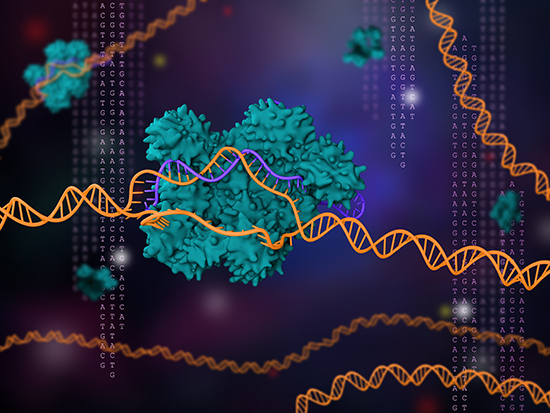
A new CRISPR interference (CRISPRi) based chemical and genetic screen could guide future tuberculosis treatment and new drug development.
A Rockefeller University team used the screen to find a range of mechanisms of drug resistance and hundreds of potential targets for synergistic drug combinations. Their work also suggests better options for treating current outbreaks of drug resistant tuberculosis in South America and Southeast Asia.
The report appears this week in Nature Microbiology, and the lead authors are Shuqi Li and Nicholas C. Poulton, both of the University’s Laboratory of Host-Pathogen Biology.
Mycobacterium tuberculosis (Mtb) is tough to treat because Mtb can rapidly evolve drug resistance. These researchers write that, “A deeper understanding of the bacterial pathways that influence drug efficacy could facilitate the development of more effective therapies, identify new mechanisms of acquired resistance, and reveal overlooked therapeutic opportunities.”
Resistance in Mtb thought to be due to the low permeability of the cell envelope and the numerous efflux pumps encoded in the Mtb genome, this arises through mutation.
Many resistance mutations have been characterized in recent decades. But as these researchers write, “These mutations most commonly occur in the drug target or drug activator. Yet, our knowledge of acquired drug resistance in Mtb remains incomplete, particularly for mutations outside of the drug target or activator and which typically confer low-to-intermediate, but clinically relevant, levels of drug resistance.”
To provide a genome-wide overview of the bacterial pathways influencing drug potency, the team developed a CRISPRi chemical-genetics platform to express nearly all Mtb genes (essential and non-essential) and measure bacterial response to specific drugs. They then overlayed the chemical-genetic results with comparative genomics of Mtb clinical isolates.
The team profiled nine antibiotics against M. tuberculosis H37Rv, detecting hundreds of gene–antibiotic combinations with altered antibiotic potency. They also validated their method by identifying the targets for several of these antibiotics.
Among the many mechanisms of drug resistance they found, several were previously unknown. One of these is associated with a multidrug-resistant tuberculosis outbreak in South America. In addition, they found that the intrinsic resistance factor whiB7 was inactivated in an entire Mtb sublineage endemic to Southeast Asia. They write that this finding presents, “An opportunity to potentially repurpose the macrolide antibiotic clarithromycin to treat tuberculosis.”
The authors determined that mtrA and mtrB genes, which encode the response regulator histidine kinase sensor, were among the genes that made the infection most sensitive. CRISPRi of mtrA, mtrB, or lpqBimpeded in vitro growth and sensitized M. tuberculosis to vancomycin, bedaquiline, and rifampicin.
Another important finding was that certain antibiotics that are chemically and mechanistically distinct share some biological effects.
Writes Luiz Pedro Sorio de Carvalho, of the Francis Crick Institute, in an accompanying editorial, “Vancomycin, a glycopeptide, blocks transpeptidation and therefore affects cell wall integrity; bedaquiline, a diarylquinoline, inhibits the synthesis of ATP; and rifampicin, an ansamycin antibiotic, blocks DNA-templated RNA synthesis. Despite clear differences between these antibiotics, the authors identified the essential mycolic acid–arabinogalactan–peptidoglycan complex as a common sensitizing process for all three antibiotics.”











